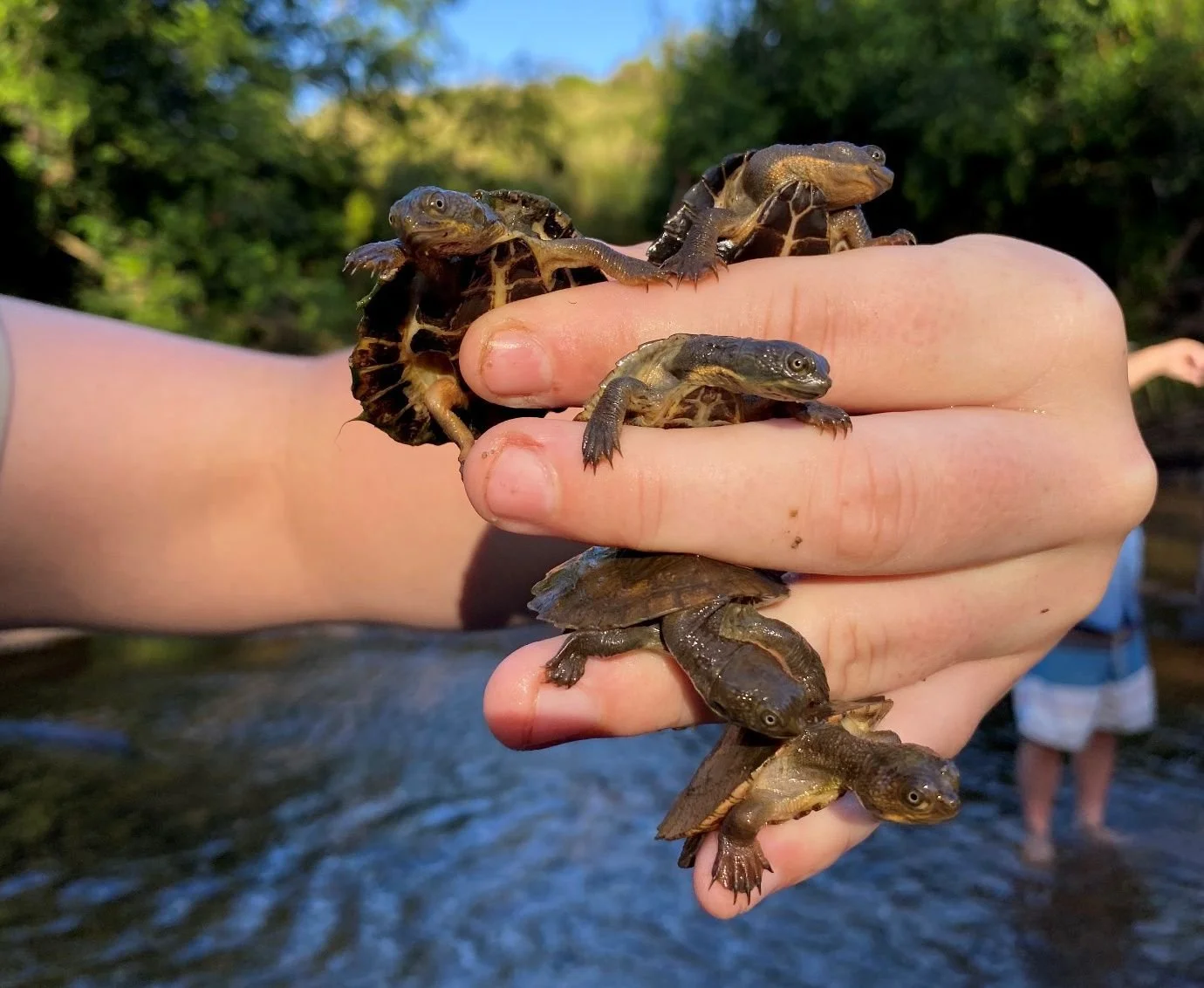Outlook improves for endangered Mary River turtle
Dr Sydney Collett holding Mary River turtle hatchlings.
A new scientific paper* details the community conservation efforts which have helped improve the future of the endangered Mary River turtle in Queensland.
The paper reviews 22 years of collaboration between scientists and stakeholders, led by the Tiaro & District Landcare Group, to study the turtle and increase its survival rates.
The Mary River turtle (Elusor macrurus), discovered in 1994 and listed as endangered in 2001, is found exclusively in the Mary River catchment. Prior to this, the Mary River Turtle was sold extensively on the pet trade as ‘penny turtles’, with up to 12,000 eggs, relocated, hatched and sold across the world. This led to a crash in numbers of juvenile turtles recruiting into the population and a dire need to address a broad range of threats to the species.
The paper notes that more than 100 members of the community have helped scientists and research students to monitor and protect the turtle.
“This involvement has provided the local community with experience and knowledge in identifying turtle species, handling turtles, taking scientific measurements, downloading acoustic receiver data, and tracking animals,” it says. This has resulted in protection of 631 nests and 9465 hatchlings entering the lower catchment since the inception of the nest protection program.
Burnett Mary Regional Group researchers Tom Espinoza and Sydney Collett are among the authors of the paper, which says further study is needed to understand why there has been such low recruitment of juvenile turtles into the lower catchment of the Mary River, despite large numbers of hatchlings entering the river every year for the past 20 years.
Predators, climate change and loss of habitat are considered likely reasons for high juvenile mortality.
Mr Espinoza, the CEO of BMRG, said collaboration among various stakeholders had proved effective in enhancing conservation of the Mary River turtle.
“The focus will now turn towards using those learnings to reduce the risk of extinction of this species through regionally-developed action plans that address the biggest threats for Mary River turtles including nest predation, climate change and habitat degradation,” he said.
“This legacy is being passed onto our young researchers and managers, including BMRG’s Dr Sydney Collett, to implement restoration and research projects to improve recruitment, habitat availability and community engagement to take our freshwater turtles off the endangered species list.”
Given the Mary River turtle was recently nominated to be uplisted to critically endangered status, the paper addresses whether community efforts have been in vain.
“We argue on the contrary: that the outlook for E. macrurus is more favourable than it was when first listed 22 years ago, and the uplisting in conservation status is due to increased knowledge rather than an increased risk of extinction,” the paper says.
“The collaboration has enabled national priorities to be set and ensured that findings are incorporated into local water resource planning and strategic development throughout the Mary River catchment.”
* Campbell, M.A., Connell, M.J., Clark, N.J., Espinoza, T., Flakus, S.P., Collett, S.J. et al. (2023) Saving the endangered Mary River turtle: Enhancing conservation outcomes through community engagement. Austral Ecology, 48, 1492–1505. Available from: https://doi.org/10.1111/aec.13382


